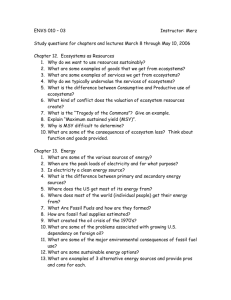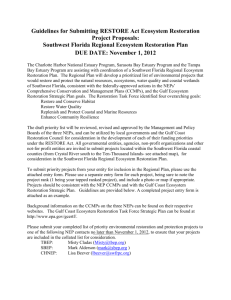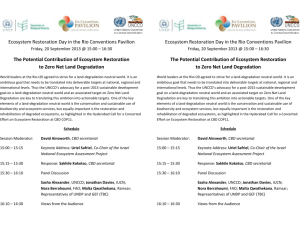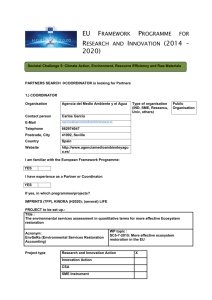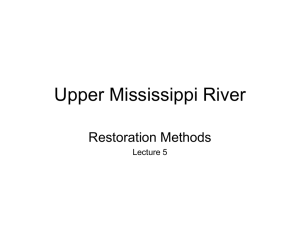This Schedule specifies the Change Control Procedure
advertisement
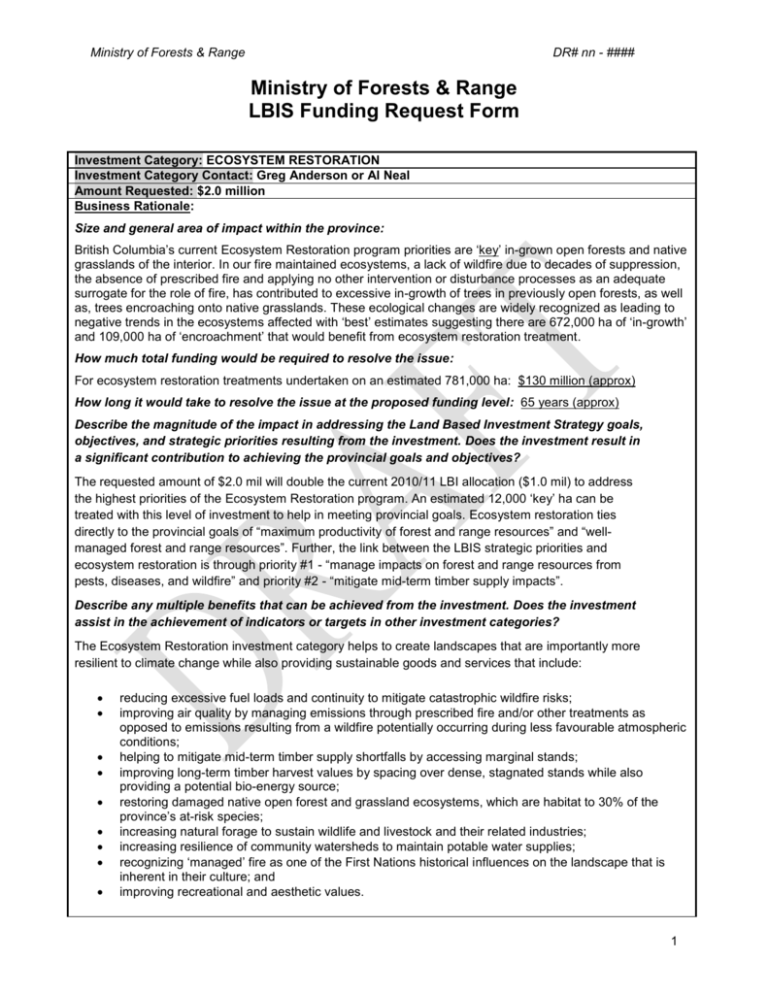
Ministry of Forests & Range DR# nn - #### Ministry of Forests & Range LBIS Funding Request Form Investment Category: ECOSYSTEM RESTORATION Investment Category Contact: Greg Anderson or Al Neal Amount Requested: $2.0 million Business Rationale: Size and general area of impact within the province: British Columbia’s current Ecosystem Restoration program priorities are ‘key’ in-grown open forests and native grasslands of the interior. In our fire maintained ecosystems, a lack of wildfire due to decades of suppression, the absence of prescribed fire and applying no other intervention or disturbance processes as an adequate surrogate for the role of fire, has contributed to excessive in-growth of trees in previously open forests, as well as, trees encroaching onto native grasslands. These ecological changes are widely recognized as leading to negative trends in the ecosystems affected with ‘best’ estimates suggesting there are 672,000 ha of ‘in-growth’ and 109,000 ha of ‘encroachment’ that would benefit from ecosystem restoration treatment. How much total funding would be required to resolve the issue: For ecosystem restoration treatments undertaken on an estimated 781,000 ha: $130 million (approx) How long it would take to resolve the issue at the proposed funding level: 65 years (approx) Describe the magnitude of the impact in addressing the Land Based Investment Strategy goals, objectives, and strategic priorities resulting from the investment. Does the investment result in a significant contribution to achieving the provincial goals and objectives? The requested amount of $2.0 mil will double the current 2010/11 LBI allocation ($1.0 mil) to address the highest priorities of the Ecosystem Restoration program. An estimated 12,000 ‘key’ ha can be treated with this level of investment to help in meeting provincial goals. Ecosystem restoration ties directly to the provincial goals of “maximum productivity of forest and range resources” and “wellmanaged forest and range resources”. Further, the link between the LBIS strategic priorities and ecosystem restoration is through priority #1 - “manage impacts on forest and range resources from pests, diseases, and wildfire” and priority #2 - “mitigate mid-term timber supply impacts”. Describe any multiple benefits that can be achieved from the investment. Does the investment assist in the achievement of indicators or targets in other investment categories? The Ecosystem Restoration investment category helps to create landscapes that are importantly more resilient to climate change while also providing sustainable goods and services that include: reducing excessive fuel loads and continuity to mitigate catastrophic wildfire risks; improving air quality by managing emissions through prescribed fire and/or other treatments as opposed to emissions resulting from a wildfire potentially occurring during less favourable atmospheric conditions; helping to mitigate mid-term timber supply shortfalls by accessing marginal stands; improving long-term timber harvest values by spacing over dense, stagnated stands while also providing a potential bio-energy source; restoring damaged native open forest and grassland ecosystems, which are habitat to 30% of the province’s at-risk species; increasing natural forage to sustain wildlife and livestock and their related industries; increasing resilience of community watersheds to maintain potable water supplies; recognizing ‘managed’ fire as one of the First Nations historical influences on the landscape that is inherent in their culture; and improving recreational and aesthetic values. 1 Ministry of Forests & Range DR# nn - #### Describe how the investment addresses structural timber supply or ecological integrity issues. Initial analysis of TSR 3 data suggests there is potential for ecosystem restoration activities to contribute to the mid-term timber supply between a 10-16% positive impact for three representative forest districts examined. A more conservative estimate using Type 1 silviculture strategies, suggests that ER activities would positively impact the mid-term supply between 0.2 to 2.3% for the same three districts sampled. Within MFR, ecosystem restoration is defined as a process for assisting with the recovery of resilience and adaptive capacity of ecosystems that have been degraded, damaged or destroyed. As such, investments in ecosystem restoration focus on re-establishing the composition, structure, pattern, and ecological processes necessary to make terrestrial and aquatic ecosystems sustainable, resilient, and healthy under current and future conditions. Describe any specific biological windows that would impact success related to the investment. Ecosystem restoration involves the application of a suite of treatments in varying combinations and intensities including; conventional harvesting, mechanical spacing/slashing; and/or prescribed fire as determined by individual site prescriptions. The nature of these three ER treatment activities most often results in the activities being undertaken within specific timing windows as follows: conventional harvesting – is undertaken throughout the year on dry or frozen conditions mechanical spacing/slashing – primarily occurs during the winter months on frozen, snow covered conditions prescribed fire – occurs only during the spring (late March to late April) and fall (October) when weather windows and burn plan indices permit, most areas of the province will have only 3 – 5 potential burning days in either spring or fall Amount Allocated (to be filled out by FPIB): Allocation Rationale (to be filled out by FPIB): 2


